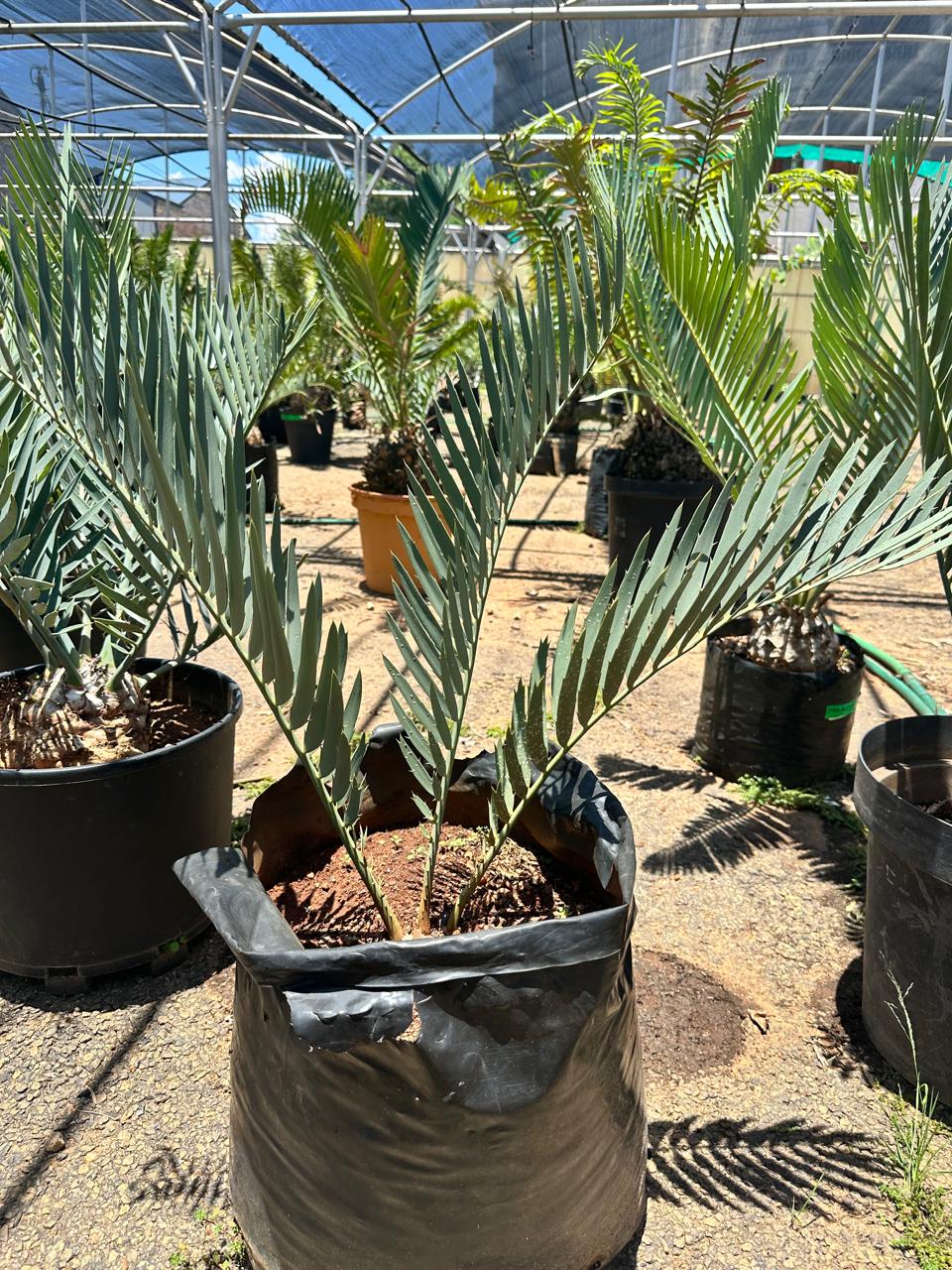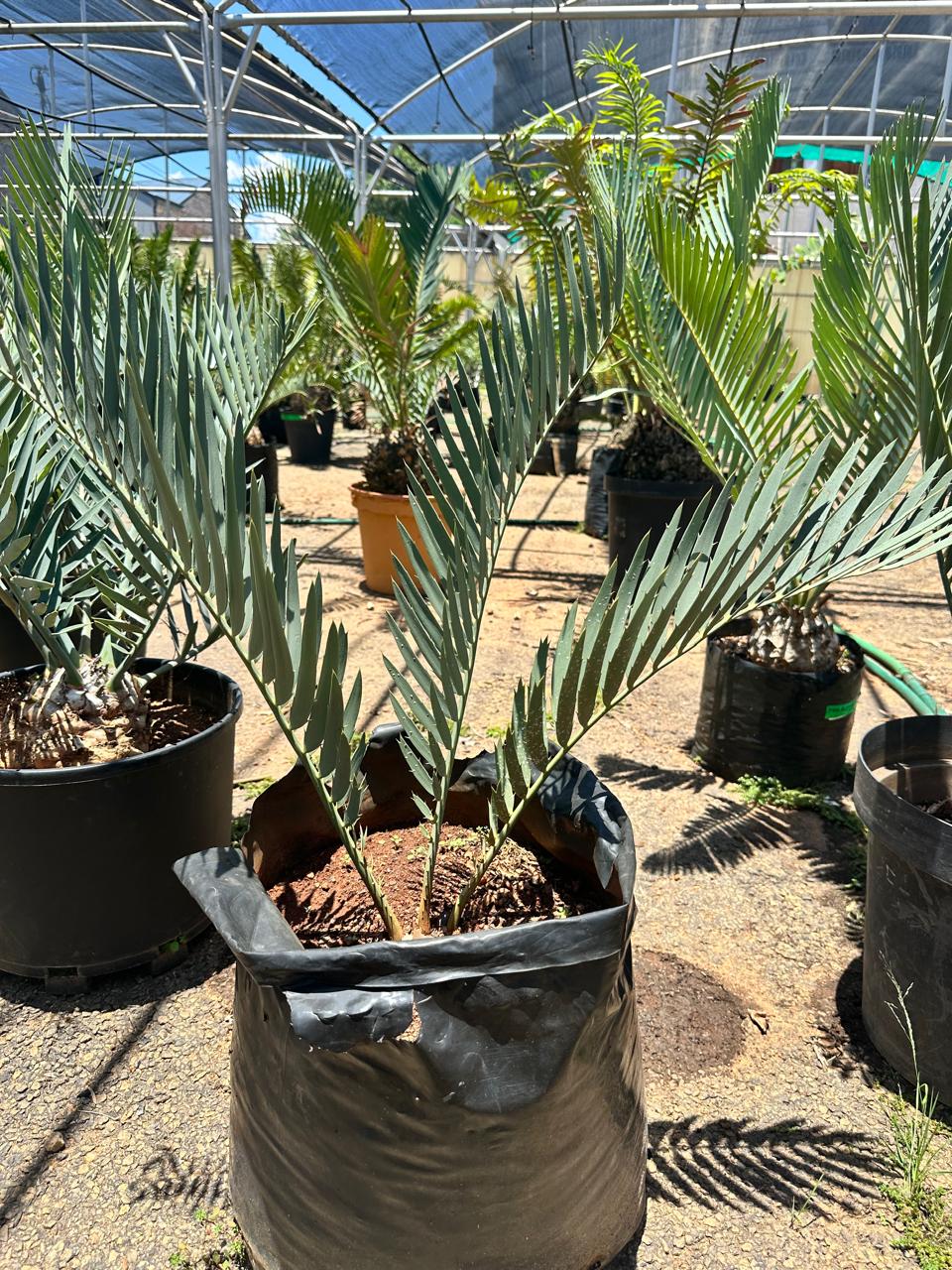

Encephalartos nubimontanus
The Encephalartos nubimontanus is a critically endangered cycad species native to South Africa, specifically the Limpopo Province. Known for its distinctive blue-green leaves, it thrives in rocky mountain habitats. Its name reflects its habitat in misty mountain regions. Conservation efforts are crucial due to illegal collection and habitat destruction.
Cones
The cones of Encephalartos nubimontanus are striking, particularly the male cones which are cylindrical and can reach up to 45 cm in length. They display a yellowish color with a waxy surface that helps protect against environmental elements. Female cones are slightly larger, broader, and more rounded, producing seeds that are essential for propagation. These cones emerge seasonally and play a significant role in the cycad’s life cycle, though habitat loss limits natural reproduction in the wild.
Leaves
The leaves of Encephalartos nubimontanus are one of its most defining features. They are long, arching, and can grow up to 1.5 meters in length. Each leaf is composed of stiff, pointed leaflets that exhibit a bluish-green hue, which helps the plant reduce water loss in its dry, rocky habitat. The leaflets are arranged in a spiral pattern along the central stalk, giving the plant its signature, feathery appearance. These leaves play a vital role in photosynthesis and water regulation.
Stems
The stem of the Encephalartos nubimontanus is typically short and robust, growing either above ground or partially buried, with a diameter reaching 30–40 cm. It can store significant amounts of water, which helps the plant survive in arid conditions. The stem is covered in old leaf bases that give it a rough, textured appearance. Over time, the stem may form a thickened, trunk-like structure, providing both stability and an energy reserve for the plant during droughts.